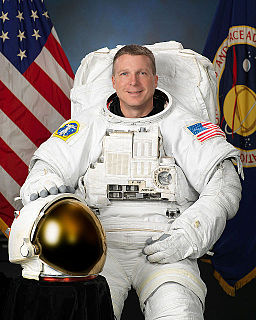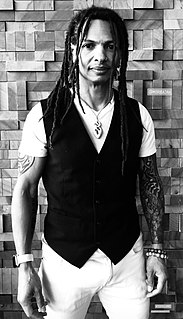Related Research Articles
SSL may refer to:

Embry–Riddle Aeronautical University (ERAU) is a private university focused on aviation and aerospace programs. Founded at Lunken Field in Cincinnati in 1926, today its main campuses are located in Daytona Beach, Florida, and Prescott, Arizona, United States. It is the largest accredited university system specializing in aviation and aerospace. It has numerous online programs and academic programs offered at satellite locations.
Draper Laboratory is an American non-profit research and development organization, headquartered in Cambridge, Massachusetts; its official name is The Charles Stark Draper Laboratory, Inc. The laboratory specializes in the design, development, and deployment of advanced technology solutions to problems in national security, space exploration, health care and energy.
Charles Stark "Doc" Draper was an American scientist and engineer, known as the "father of inertial navigation". He was the founder and director of the Massachusetts Institute of Technology's Instrumentation Laboratory, later renamed the Charles Stark Draper Laboratory, which made the Apollo Moon landings possible through the Apollo Guidance Computer it designed for NASA.
The University Corporation for Atmospheric Research (UCAR) is a US nonprofit consortium of more than 100 colleges and universities providing research and training in the atmospheric and related sciences. UCAR manages the National Center for Atmospheric Research (NCAR) and provides additional services to strengthen and support research and education through its community programs. Its headquarters, in Boulder, Colorado, include NCAR's Mesa Laboratory, designed by I.M. Pei.
Calspan Corporation is a science and technology company founded in 1943 as part of the Research Laboratory of the Curtiss-Wright Airplane Division at Buffalo, New York. Calspan consists of four primary operating units: Flight Research, Transportation Research, Aerospace Sciences Transonic Wind Tunnel, and Crash Investigations. The company's main facility is in Cheektowaga, New York, while it has other facilities such as the Flight Research Center in Niagara Falls, New York, and remote flight test operations at Edwards Air Force Base, California, and Patuxent River, Maryland. Calspan also has thirteen field offices throughout the Eastern United States which perform accident investigations on behalf of the United States Department of Transportation.

Terry W. Virts is a retired NASA astronaut, International Space Station Commander and colonel in the United States Air Force.

The Space Systems Laboratory (SSL) is part of the Aerospace Engineering Department and A. James Clark School of Engineering at the University of Maryland in College Park, Maryland. The Space Systems Laboratory is centered on the Neutral Buoyancy Research Facility, a 50-foot-diameter (15 m), 25-foot-deep (7.6 m) neutral buoyancy pool used to simulate the microgravity environment of space. The only such facility housed at a university, Maryland's neutral buoyancy tank is used for undergraduate and graduate research at the Space Systems Lab. Research in Space Systems emphasizes space robotics, human factors, applications of artificial intelligence and the underlying fundamentals of space simulation. There are currently five robots being tested, including Ranger, a four-armed satellite repair robot, and SCAMP, a six-degree of freedom free-flying underwater camera platform. Ranger was funded by NASA starting in 1992, and was to be a technological demonstration of orbital satellite servicing. NASA was never able to manifest it for launch and the program was defunded circa 2006. For example, Ranger development work at the SSL continues, albeit at a slower pace; Ranger was used to demonstrate robotic servicing techniques for NASA's proposed robotic Hubble Servicing Mission.
Embry–Riddle Aeronautical University, Daytona Beach is a residential campus of Embry–Riddle Aeronautical University. The university offers associate, bachelor's, master's, and PhD degree programs in arts, sciences, aviation, business, and engineering.

Embry–Riddle Aeronautical University, Prescott is a residential campus of Embry-Riddle Aeronautical University in Prescott, Arizona. The university offers bachelor and master's in arts, sciences, aviation, business, engineering, and security & intelligence. The Prescott campus also offers a master's degree in Safety Science, Security & Intelligence, and Cyber Intelligence & Security.
Korea Aerospace University is a private university located in Goyang, Gyeonggi, South Korea.
Carol Yvonne Espy-Wilson is an electrical engineer and Professor of Electrical and Computer Engineering at the University of Maryland (UMD) at College Park. She received her Ph.D. in Electrical Engineering from the Massachusetts Institute of Technology in 1987.
Steven Bohlemann is an American Paralympic soccer player. He attended Embry-Riddle Aeronautical University and Georgia Institute of Technology, and has completed a number of internships related to aerospace engineering.

David W. Miller is an American aerospace engineer who is the current Jerome Hunsaker Professor of Aeronautics and Astronautics at Massachusetts Institute of Technology and an elected Fellow of the American Institute of Aeronautics and Astronautics since 2015. He is currently on a leave of absence from MIT to be a VP and the Chief Technology Officer to The Aerospace Corporation. He has worked on multiple NASA projects and served as NASA Chief Technologist.

Robert E. "Rob" Meyerson is an American aerospace engineer and executive known for his role in the development of reusable rocket launch systems.

Moriba Kemessia Jah is an American space scientist, aerospace engineer and space environmentalist specializing in orbit determination and prediction, especially as related to space situational awareness and space traffic monitoring. He is currently an associate professor of Aerospace Engineering and Engineering Mechanics at the University of Texas at Austin. Jah previously worked as a spacecraft navigator at the NASA Jet Propulsion Laboratory, where he was a navigator for the Mars Global Surveyor, Mars Odyssey, Mars Express, Mars Exploration Rover, and his last mission was the Mars Reconnaissance Orbiter. He is a Fellow of the American Astronautical Society, the Air Force Research Laboratory, the International Association for the Advancement of Space Safety and, the Royal Astronomical Society. Jah was also selected into the 10th anniversary class of TED Fellows. He also was selected into the AIAA class of Fellows and Honorary Fellows in the year of the 50th Anniversary of Apollo 11. The AIAA "confers the distinction of Fellow upon individuals in recognition of their notable and valuable contributions to the arts, sciences or technology of aeronautics and astronautics."

The Space Systems Laboratory (SSL) is in the Department of Aeronautics and Astronautics at the Massachusetts Institute of Technology in Cambridge, MA. Its mission is to develop the technology and systems analysis associated with small spacecraft, precision optical systems, and International Space Station technology research and development.
The Matthew Isakowitz Fellowship is a non-profit program in the United States that provides paid internships and executive mentorship to exceptional undergraduate and graduate students seeking careers in commercial space. The fellowship was created in memory of Matthew Isakowitz, an American aerospace engineer and early contributor to the field of commercial spaceflight who died at the age of 29.
The Patti Grace Smith Fellowship is a non-profit program in the United States that provides paid internships, scholarships, and executive mentorship to exceptional Black undergraduate students seeking a career in aerospace. The fellowship is named after Patricia Grace Smith, a United States Federal Aviation Administration (FAA) official whose regulatory work helped lay the foundations for commercial spaceflight. The program was founded in her honor in 2020.
References
- ↑ "Drexel Space Systems Laboratory". Drexel. Retrieved 21 February 2021.
- ↑ "Space Systems Laboratory". Embry-Riddle Aeronautical University. Retrieved 21 February 2021.
- ↑ "Space Systems Laboratory". Tokyo Metropolitan University. Retrieved 21 February 2021.
- ↑ "Space Systems Laboratory". University of Kentucky. Retrieved 21 February 2021.
- ↑ "Space Systems Laboratory". ssl.engin.umich.edu.
- ↑ "Space Systems Laboratory". University of Pisa. Retrieved 21 February 2021.
- ↑ "Space Systems Laboratory". University of Sheffield. Retrieved 21 February 2021.